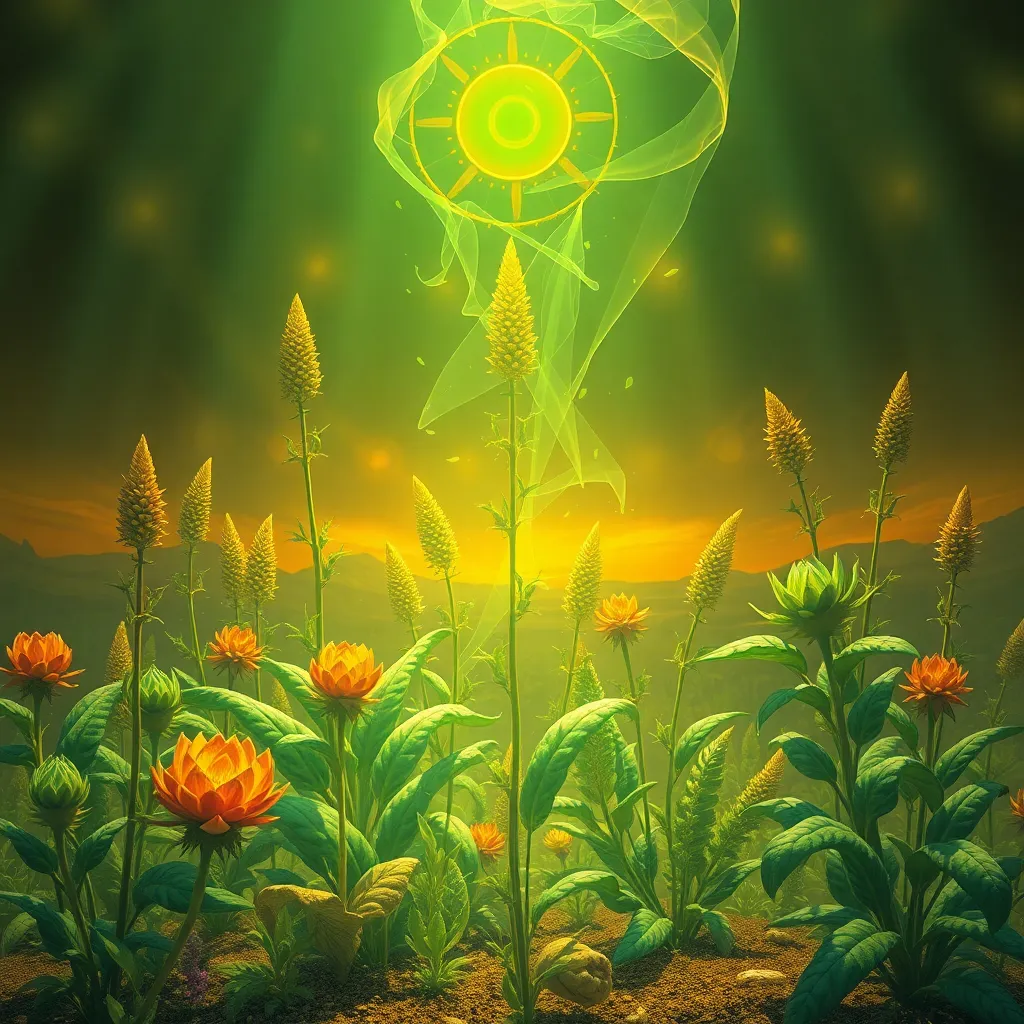The Connection Between Sacred Plants and Egyptian Rituals
I. Introduction
The significance of sacred plants in ancient cultures cannot be overstated. Across various civilizations, plants have played vital roles in spiritual practices, symbolizing life, death, and connection to the divine. In ancient Egypt, these plants were not only integral to daily life but also served as essential components in rituals that sought to bridge the gap between humanity and the divine.
This article will explore the intricate relationship between sacred plants and Egyptian rituals, examining how these natural elements were woven into the spiritual fabric of ancient Egyptian society.
II. Historical Context of Egyptian Rituals
The ancient Egyptian religion was a complex system of beliefs and practices centered around a pantheon of gods and goddesses. Rituals were paramount in these beliefs, as they provided a means for individuals and communities to connect with the divine forces that governed their world.
Nature and the environment held a sacred place in Egyptian cosmology. The Nile River, for example, was not only a source of life but also considered a divine entity. The sacred plants that thrived along its banks were seen as gifts from the gods, playing significant roles in rituals that honored both nature and the divine.
III. Overview of Sacred Plants in Ancient Egypt
In ancient Egypt, sacred plants referred to specific flora that held religious significance. These plants were often associated with particular deities or spiritual concepts.
- Lotus: A symbol of creation and rebirth.
- Papyrus: Associated with knowledge and writing.
- Myrrh: Known for its aromatic properties, often linked to divine connection.
Each of these plants carried deep symbolism, representing various aspects of life, death, and the afterlife in Egyptian mythology.
IV. Ritual Uses of Sacred Plants
Sacred plants were utilized in a wide range of rituals in ancient Egypt. Their applications were diverse and multifaceted:
- Incense and Offerings: Plants were burned as incense during ceremonies, creating fragrant smoke that was believed to carry prayers to the gods.
- Medicinal Properties: Many sacred plants were used for their healing properties, incorporated into rituals aimed at restoring health and balance.
- Funerary Practices: Plants played a crucial role in funerary rites, symbolizing the journey to the afterlife and providing sustenance for the deceased.
V. Symbolism of Sacred Plants in Egyptian Mythology
The symbolism of sacred plants in Egyptian mythology is rich and varied, with each plant embodying specific themes:
- The Lotus: Often depicted in art, the lotus symbolizes creation, representing the sun’s rise and the cycle of life and death.
- Papyrus: This plant was essential in the creation of paper, symbolizing knowledge, writing, and the documentation of sacred texts.
- Myrrh: Frequently mentioned in religious texts, myrrh was associated with the divine and was used in embalming, highlighting its connection to the afterlife.
VI. Sacred Plants and the Afterlife
In ancient Egyptian belief, the afterlife was a continuation of life, and sacred plants played a significant role in this transition. The following points summarize their importance:
- Beliefs Surrounding Plants: Plants were seen as guides for the deceased, aiding their journey to the afterlife.
- Plant Offerings in Tombs: Archaeological evidence shows that offerings of sacred plants were common in tombs, intended to provide for the deceased in the afterlife.
- Representations in Funerary Art: Sacred plants often appeared in funerary art, symbolizing rebirth and immortality.
VII. Modern Perspectives on Sacred Plants and Egyptian Rituals
Today, the influence of ancient Egyptian practices can still be felt in contemporary spiritual practices. The following aspects highlight this ongoing connection:
- Influence on Spirituality: Many modern spiritual movements draw inspiration from ancient Egyptian rituals, emphasizing the significance of nature and sacred plants.
- Archaeological Findings: Recent discoveries continue to shed light on ancient rituals, providing insights into how sacred plants were integrated into spiritual practices.
- Resurgence of Interest: There is a growing interest in the use of sacred plants in modern spirituality, with individuals seeking to reconnect with ancient wisdom.
VIII. Conclusion
The connection between sacred plants and Egyptian rituals is a testament to the intricate relationship between nature and spirituality in ancient Egypt. These plants served not only as physical entities but also as symbols of life, death, and divine connection.
As we reflect on these practices, it becomes evident that their impact continues to resonate in contemporary culture and spirituality. Further research and exploration of ancient Egyptian practices can provide deeper insights into our understanding of the natural world and our place within it.




